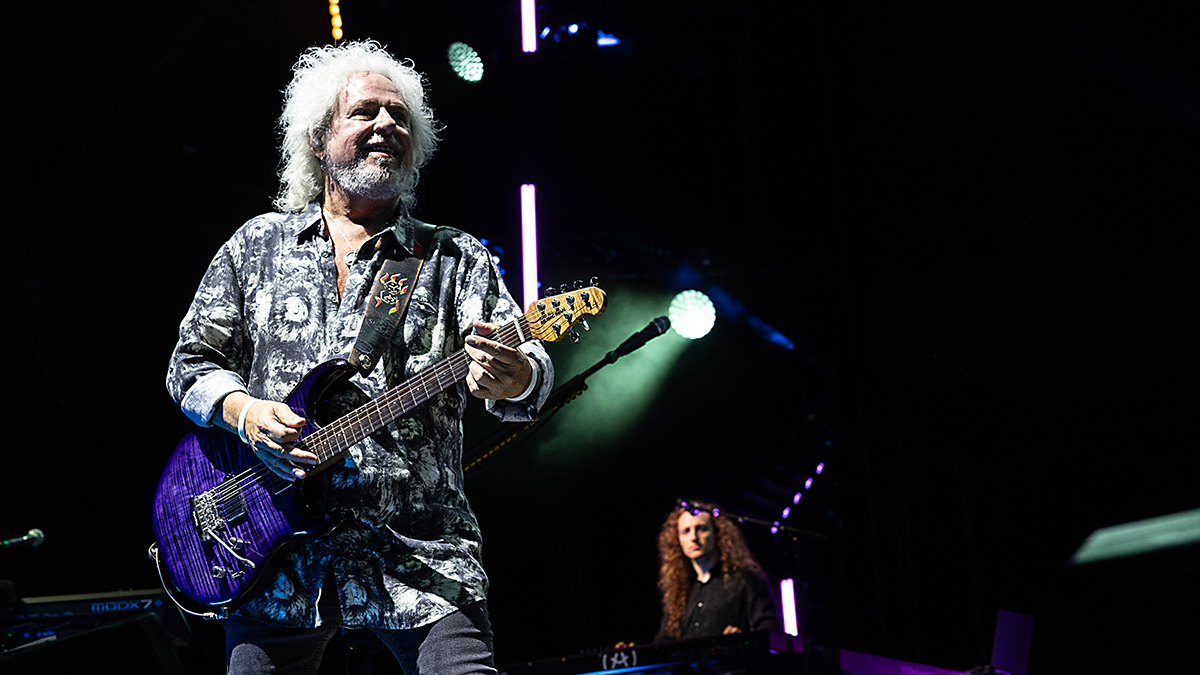Make your guitar sing with this harmony-laden rock arrangement of classic Christmas carol, The First Noël, in the style of Steve Vai and Brian May
Wow the family with this special six-string take on the much-loved choral tune

We’re going back to the 13th or 14th century in England for when the lyrics were written, and potentially earlier than that for the music as we look at The First Noël.
The song is sung from the perspective of the night of Christ’s birth in Bethlehem and would probably have been inspired by the ‘Miracle Plays’ of the era. As with any song of this type, The First Noël is designed to be sung, so the melody is central to this fact.
In England the lyric would potentially have been written as a poem and then set to music later, and the music bears a strong resemblance to that of France or Germany. So quite likely it was an English poem set to a French or German tune in the Proto-Renaissance period. Artists that have covered this song include Carrie Underwood and Lady A.
‘Conjunct motion’ is a musical way of saying that the pattern of movement is from one note in the scale, to the next degree of the scale
Melodically it is very simple and memorable, which after all is what the main aim of this type of song is. The melody moves entirely diatonically in the key of C major, in this instance, and there is a lot of conjunct motion.
This is a musical way of saying that the pattern of movement is on many occasions from one note in the scale, to the next degree of the scale, to the next and so on. For example, there is a good amount of C to D to E type of movement.
The opposite of conjunct motion would be called disjunct, where there are a lot of large interval jumps between notes. It stands to reason that there isn’t much of this type of movement in songs that are designed to be sung by large groups of people. This is obviously true of pop songs as well as hymns and carols.
Being in the key of C major the notes are C-D-E-F-G-A-B with no sharp or flat notes. The chords and harmony are all part of the same scale and very simple. The recording includes a large number of extra harmony notes on the guitar and a string arrangement – think of Brian May or some of Steve Vai’s more orchestral arrangement techniques.
All the latest guitar news, interviews, lessons, reviews, deals and more, direct to your inbox!
The melody is served up on a platter, but there’s an intricate arrangement supporting it. The notation only includes the melodic guitar part, but when you’re writing this type of arrangement it’s always good to familiarise yourself with foundational chord harmony. This frees you up musically, and allows for more confident improvisation.
Get the tone
This is classic rock or metal territory, so a good dose of preamp gain and power amp drive is perfect. With a dense arrangement of harmony guitars and strings, don’t overdo anything, and always avoid too many midrange frequencies when layering a lot of textures. The rhythm guitars here are all single-coil and the melody is played on my tobacco sunburst Gibson Les Paul.
Performance notes
There is a lot of detail in terms of articulations this month. The octave part in the first eight bars needs careful muting of unwanted strings that could ring out and create dissonance.
You might want to check out my fingering on the video [above], but you may prefer to play the octaves another way.
Full track
Pay attention to when and how notes use string bends, slides and legato. Feel free to develop your own ideas, but in general you can get a lot of mileage out of a simple melody and some tasteful embellishments to the way they’re played or sung – think Donny Hathaway here rather than Mariah Carey!
